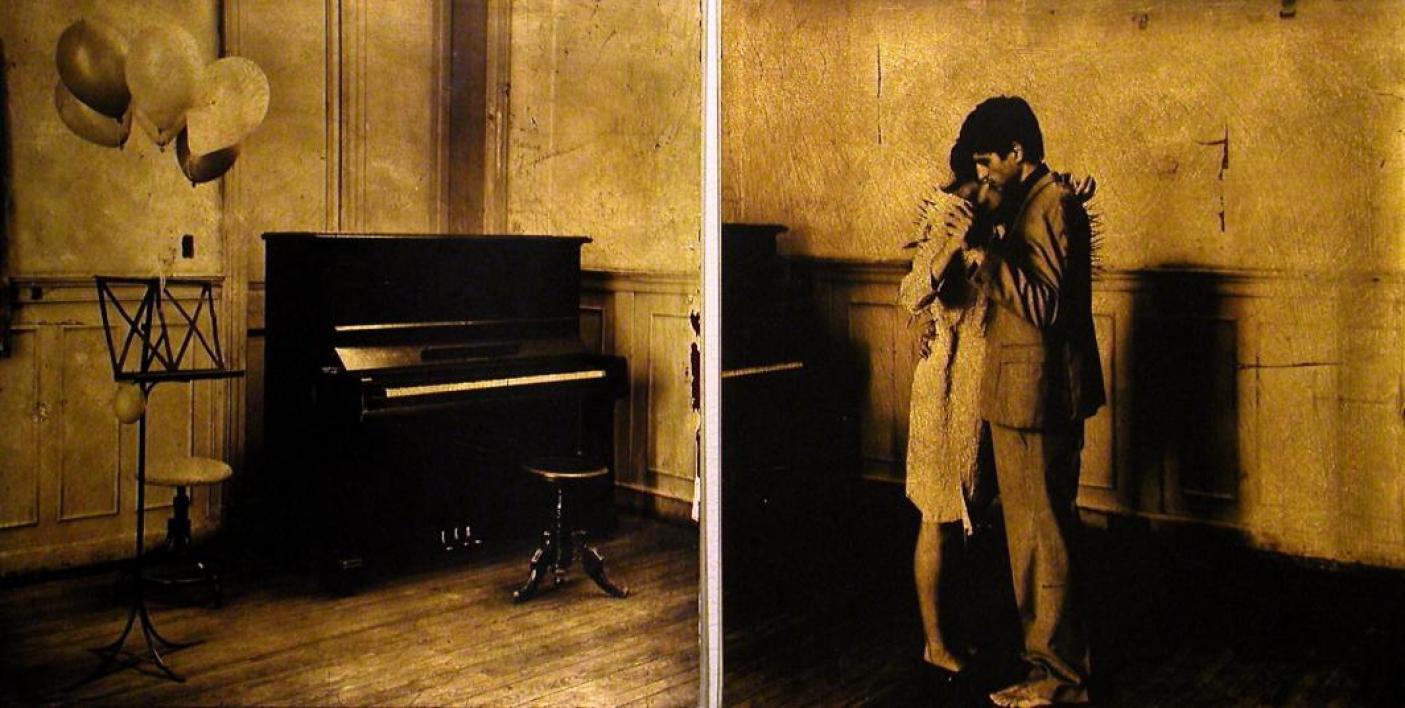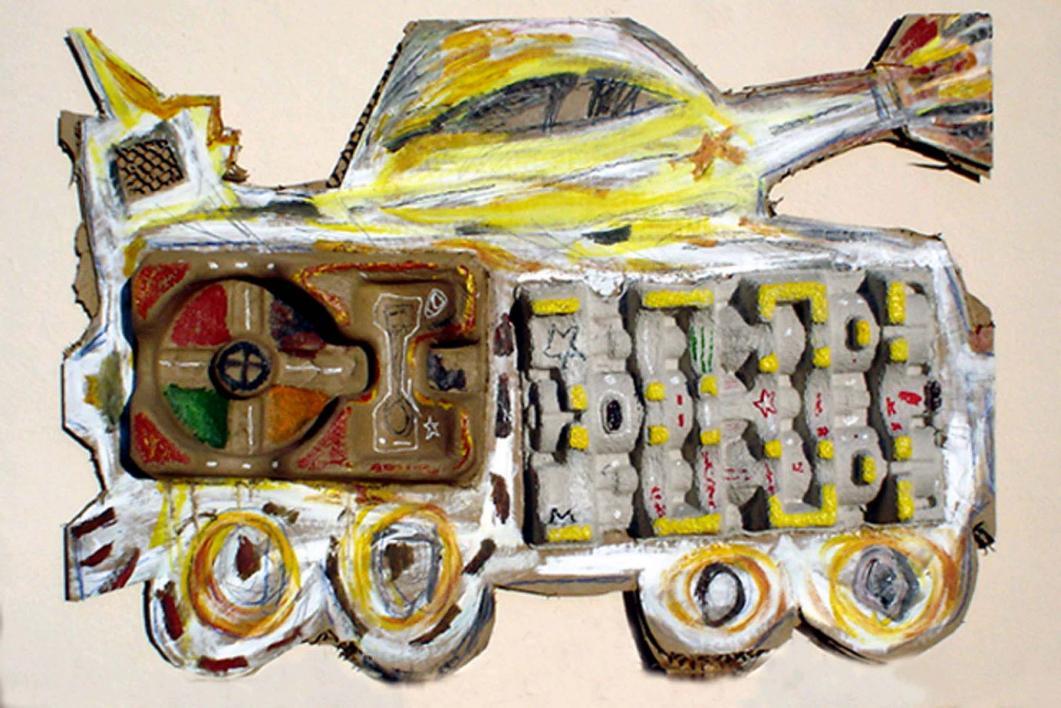Rampa: Signaling New Latin American Art Initiatives showcases ASU Art Museum’s focus on Latin American art

Eugenio Dittborn, 1943- Chile
Red Light District, 1984
Paint, feathers, and photosilkscreen on Kraft paper, 69 x 57”
Courtesy of the Collection of Diane and Bruce Halle
Photo courtesy of Herberger Institute for Design and the Arts.
TEMPE, Ariz. – Latin American art entered the ASU Art Museum among its earliest acquisitions and has remained a seminal part of the museum’s collection for 50 years. Recently, the museum ramped up its collection to include works from the Southern Cone (the lower part of the Southern hemisphere: Brazil, Argentina, Chile) which will be the focus of the exhibition Rampa: Signaling New Latin American Art Initiatives, March 6 – August 20. There will be a public reception for Rampa March 5, 7-9 p.m.
In addition to newly acquired works from Brazil and Cuba, Rampa will showcase work from the museum’s permanent collection and works on loan from Arizona collectors. Nearly 40 artists from seven countries will be represented.
“The museum is oriented to research, which in our definition, equates with discovery,” says Director and Chief Curator Marilyn Zeitlin. “We have discovered some amazing work in our own community and in our travels. Stand by for some delightful surprises.”
Significant examples of Mexican modernism initiated the museum’s collection in the 1950s, and prints portraying 20th century social issues in Mexico expanded those holdings. In the 1990s, the museum acquired stunning works by young artists living and working in Cuba, creating the largest collection of contemporary Cuban art outside the island. In May, 2004, the museum removed the barriers between the United States and Latin America and reinstalled its former American Gallery as the new Americas Gallery. In November, 2004, the Arizona Republicnewspaper named the museum “the best home to Latin American art.”
“Like other art phenomena, Latin American art straddles the precarious but provocative terrain on which local content and aesthetics meet the global,” says Zeitlin. “Geography is no longer a sufficient means of delineating the field. Latin America has produced parallel movements from the mainstream of art history. It can – and often does – look like art made anywhere in the contemporary world.”
Some of the artists featured in the Rampa exhibition include Efrain Almeida, Carlos Alfonzo, Belkis Ayón, Ricardo Basbaum, José Bechara, Magdalena Campos Pons, Tiago Carneiro da Cunha, Los Carpinteros, Franklin Cassaro, Enrique Chagoya, Martín Chambi, Eugenio Dittborn, José Emilio Fuentes, Aimée Garcia, Flor Garduño, Luis Gonzales Palma, Nelson Leirner, Jarbas Lopes, Jorge Macchi, Carlos Montes de Oca, Raul Mourão, Lucio Muniain, Rivane Neuenschwander, Oscar Oiwa, Rosana Palazyan, Miguel Rio Branco, Fernando Rodríguez, David Alfaro Siquieros, Valeska Soares, José A. Toirac, Felix Gonzales-Torres, Tunga, Pedro Vizcaino, and Nahum Zenil.
Arizona collectors lending works include Rea Bennett and Jim Kaufman, Sandy and Steve Davis, Diane and Bruce Halle, Linda Hirshman and David Forkosh, Laurie and George Jackson, Stéphane Janssen, Sara and David Lieberman, Fran and Steve Magee, Gail and Steve Rineberg, Donna and Howard Stone, Monique de los Rios Urban, Abby Whitenack, and Judy and Sid Zuber.
Other events coinciding with Rampa at the ASU Art Museum include “Song of Brazil,” a performance by soprano Melanie Ohm and Brazilian pianist Rúbia Santos, March 8 at 7:30 p.m., in the museum; and “From Cannibalism to Geometry,” a public lecture by Dr. Beverly Adams, curator of the Diane and Bruce Halle Collection, April 12, 7 p.m.
Rampa is organized by the Arizona State University Art Museum and made possible in part by Peter Shikany/PS Studios, Lisa Sette/Lisa Sette Gallery, Fran and Steve Magee/Austin, Texas, and Friends of the ASU Art Museum. In kind support is provided by Marilyn and Brad Brados (the Brazilian Consul for Phoenix), Tatiana Hensley and Marilou George, Interlingua Language School and TAM Brazilian Airlines.
The ASU Art Museum, named “the single most impressive venue for contemporary art in Arizona” by Art in America, is part of the Herberger College of Fine Arts at Arizona State University. The museum is located on the southeast corner of Mill Avenue and 10th Street in Tempe and entry is free. Hours are 10 a.m. - 5 p.m., Tuesday through Saturday and until 9 p.m. Tuesdays during the academic year. For more information, call (480) 965-2787 or visit the museum online at http://asuartmuseum.asu.edu
Media Contact:
Denise Tanguay
480.965.7144
denise.tanguay@asu.edu


